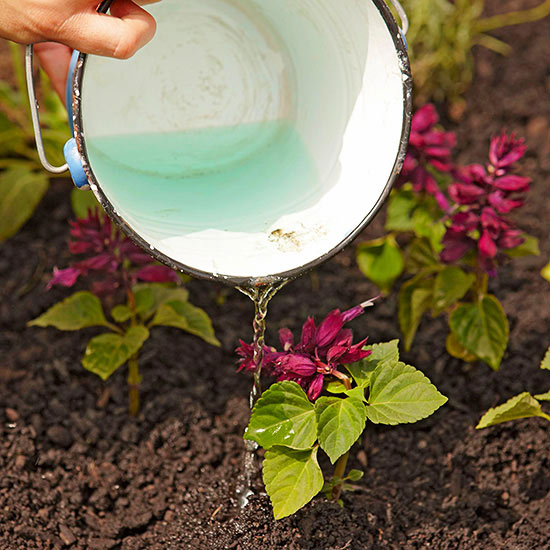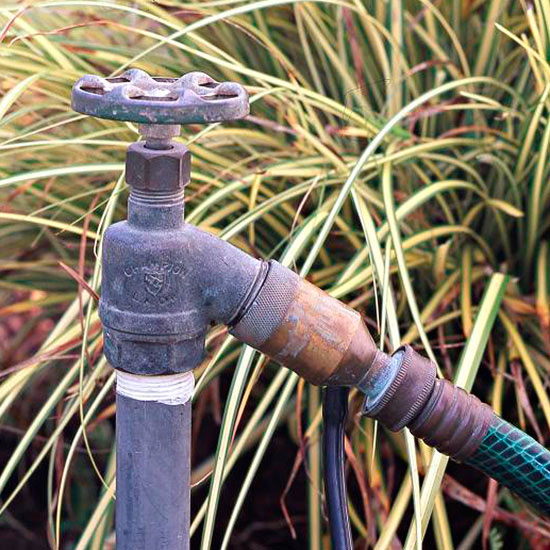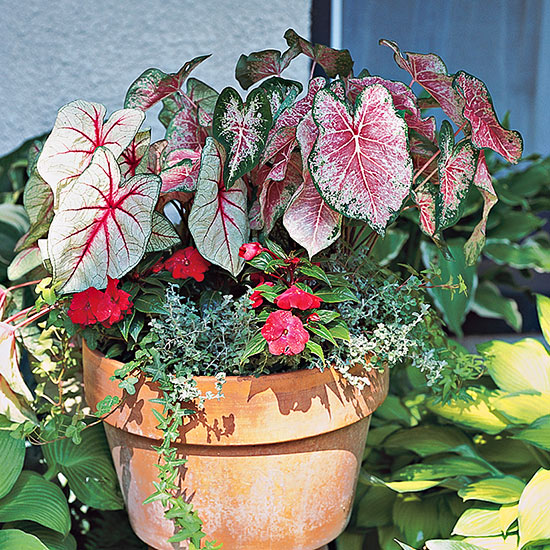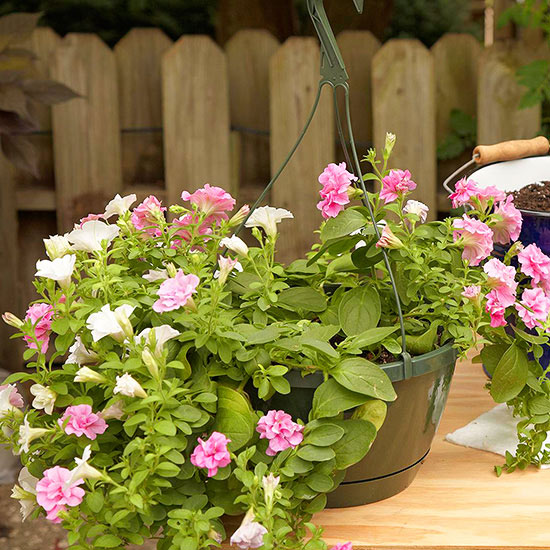






Slow- or gradual-release fertilizers are excellent for quick-color plants. These products feature special coatings that gradually release nutrients, usually over a period of three to nine months. The fertilizer label will clearly specify the time frame. Slow-release products frequently are already blended into bagged potting mixes, both soilless and soil-base types.
If you purchase mixes that don't contain fertilizer, add it prior to planting. Midway through the growing season, if needed, you can work more slow-release fertilizer into the soil.
Dissolved in water, soluble fertilizers deliver a quick nutrient burst. They're easy to handle and store and contain a high percentage of nutrients per weight. In soil with organic matter, nutrients from a soluble fertilizer are retained. But in sandy soil or soilless mixes, nutrients move out of root zones quickly when more water washes through the soil. Most liquid fertilizers are poured onto soil. Some are sprayed onto leaves, which absorb nutrients.
Organic fertilizers include compost and manure, which provide slow-release nitrogen. These fertilizers typically are used with planting beds or large containers like half-barrel planters. They improve soil structure, encourage soil microbes and earthworms, and contain a high level of micronutrients that plants need to grow.
Some organic fertilizers, such as bonemeal, blood meal, or cottonseed meal, are concentrated. A small amount of these materials offers a large nutrient boost, which explains their often higher price. Although meal fertilizers are a good organic choice, they require microbes to break them down. That means they can't provide readily available nutrients during cold seasons when microbes are inactive.
Most plants give clues when available nutrients are insufficient to fuel growth. Watch foliage carefully. When nitrogen is scarce, leaves turn yellow. Too little phosphorus causes leaves to turn reddish or purple. Older leaves burn and drop when potassium is in short supply. Other symptoms of nutrient deficiency include weak or slow growth and smaller leaves and flowers.

You can apply liquid fertilizer to plants directly with your garden hose by adding a siphon attachment. It attaches to the faucet end of the hose. This device siphons a solution of fertilizer concentrate you mix in a bucket. The water flowing through the hose dilutes the concentrate.
Container materials influence how much you have to water, which has a direct impact on fertilizer retention in soil. When plants are watered more frequently -- from rain or irrigation -- nutrients tend to wash from the soil more quickly. Plants watered less usually retain nutrients longer.

Unglazed terra-cotta allows air and water to move through the container. It is good for plants that prefer dry soil. Clay pots need more frequent irrigation, which washes away nutrients more quickly. Fertilize plants in these pots more often.

Plastic containers aren't porous and tend to retain water longer. This is good for plants that prefer consistent moisture around their roots. Soil in plastic pots won't dry out as fast or need water as often, so nutrients stay in the soil longer.
Copyright © www.100flowers.win Botanic Garden All Rights Reserved